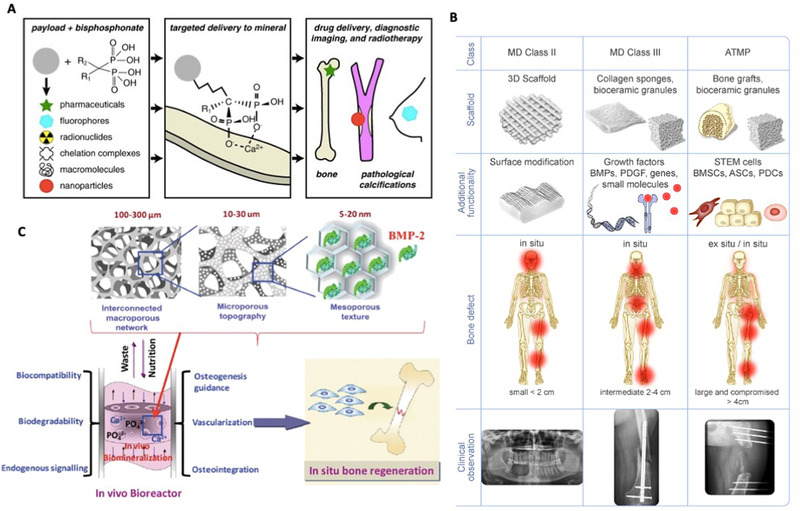FIGURE 3.

Nanomedicine and biomaterials for bone repair. (A) Utility of bisphosphonates for targeted bone mineral delivery in its unconjugated/ conjugated form to various pharmaceuticals, nanoparticles, fluorophores, chelation complexes, and macromolecules. Bisphosphonates can also be used for drug delivery, radiotherapy, and diagnosis. Reproduced with permission.[ 39 ] Copyright 2015, Elsevier. (B) The three main scaffold fabrication techniques for bone regeneration. The first uses synthetic bone graft substitutes for medical device(MD) class II, the second a synergy of bioactive molecules in a ceramic scaffold for MD class III, and the third a tissue engineering‐based approach with stem cells in a scaffold, with or without bioactive molecules called advanced therapeutic medicinal products (ATMP). Reproduced with permission.[ 13 ] Copyright 2018, Elsevier. (C) The development of nanomaterials with biomimicry considering various factors such as interconnected macropores, microporous topography, composition, mineralization, and use of bioactive molecules. These nanomaterials function as in vivo bioreactors for in situ bone regeneration. Reproduced with permission.[ 8 ] Copyright 2017, RSC Pub
